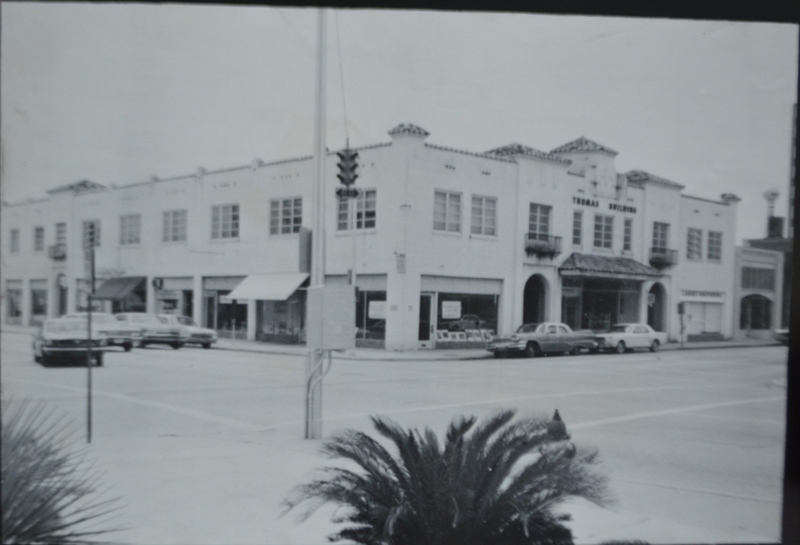Development of the Jackson, Church, Orange, and Main Block
The development of Downtown Orlando went through a long period of insignificance for most of the 20th century. The Jackson, Church, Orange, and Main block remained nearly unchanged during the first half of the 20th century; only a few minor bits of construction that were mostly changes to buildings. Most of the block was occupied with small shops, such as Cervantes Spanish Restaurant, Family Loan Company, Roger Reality Company, and other shops. One of the largest buildings on the block was the Thomas Building arcade, which contained many of the shops in the block. Another prominent building on the block was the Astor Hotel, later the Bass Hotel. The area was well developed by the early decades of the 20th century, but suffered through successive waves of the real estate collapse and the Great Depression, which caused the block to remain in stasis and kept any new construction from occurring. This period also affected many of the shops on the block and many failed to remain open for long periods of time. World War II began a turnaround for the area and promoted growth in the region again. Despite this, significant physical growth remained limited until the 1960s.
From the late 1910s to the early 1960s, Downtown Orlando remained largely unchanged physically. In the early 1960s, the block underwent many changes and nearly all the small shops and restaurants were removed, except for a few on the corner of Church and Orange, which remained for a little while longer than the rest of the block. The block was turned into parking area, with a parking garage built there as well. The parking remained for a few years before construction of the CNA Tower began and was completed in 1972. The space was later renamed the Citrus Center. In 1982, the completion of the Barnett Plaza, one of Orlando’s first skyscrapers, launched a new wave of development in the Downtown area. The Barnett Plaza, a 15-story office building, was built by Jameel, Inc., owned by a Saudi Arabian family who also owned the nearby CNA Tower. Another significant change, along with the new development that began after the WWII, was the reorganization of some of the streets of Orlando. In particular, Main Street, which had gone straight through Downtown Orlando, was renamed Magnolia Avenue in the late 1950s.
"Signature Plaza." Emporis. http://www.emporis.com/building/signatureplaza-orlando-fl- usa. (accessed November 27, 2014).
"Citrus Center." Parkway.com. http://pky.com/available-space/florida/orlando/citrus-center/. (accessed November 27, 2014).
Polk's Orlando (Orange County, Fla.) City Directory including Winter Park and Orange County Taxpayers ... Also a Buyers' Guide and Complete Classified Business Directory. Jacksonville, FL: R.L. Polk &, 1943.
Polk's Orlando (Orange County, Fla.) City Directory including Winter Park and Orange County Taxpayers ... Also a Buyers' Guide and Complete Classified Business Directory. Jacksonville, FL: R.L. Polk &, 1959.

